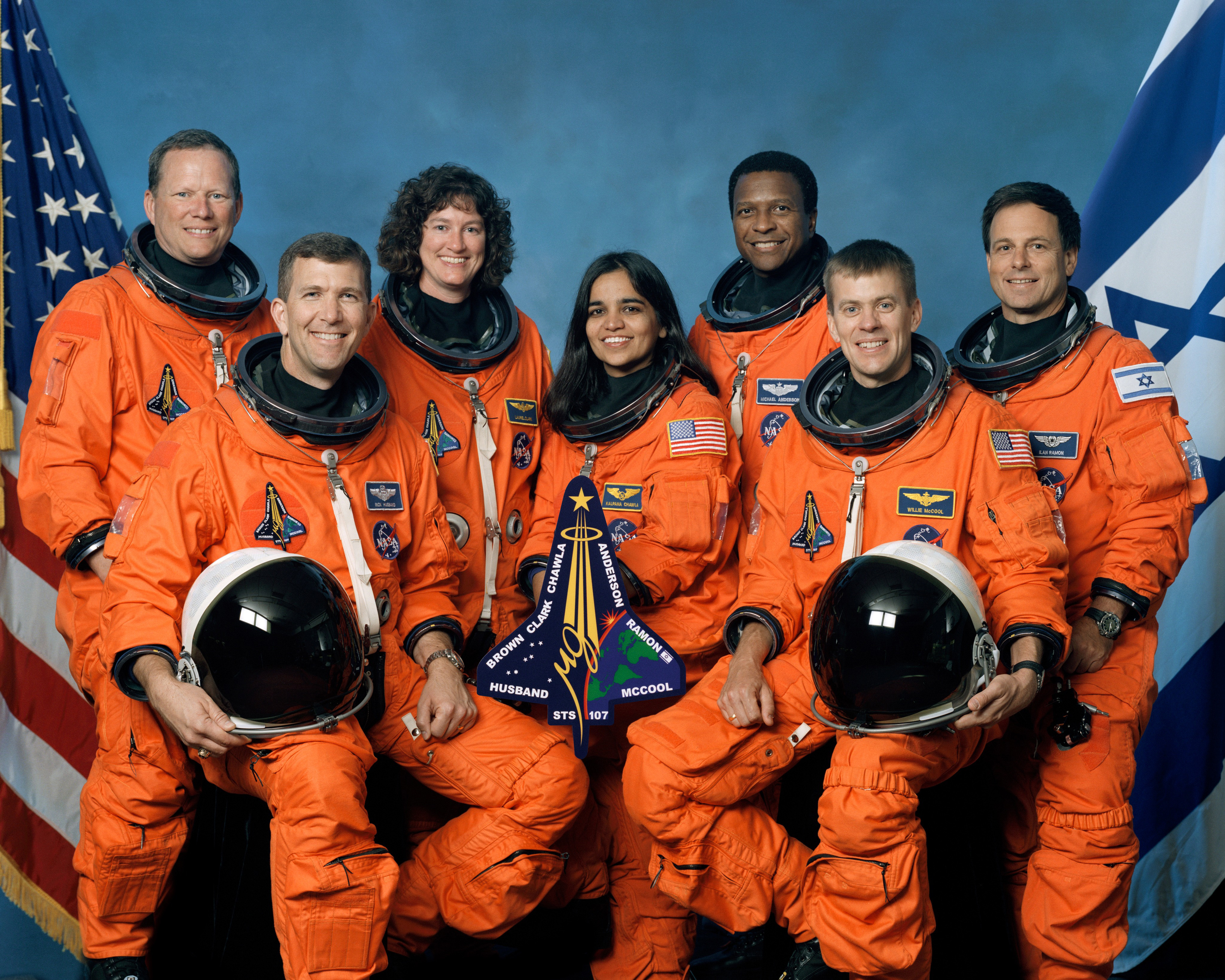 |
| THE HEAVENS |
| Date | February 1, 2003 | ||||||||||||||
|---|---|---|---|---|---|---|---|---|---|---|---|---|---|---|---|
| Time | 08:59 EST (13:59 UTC) | ||||||||||||||
| Location | Over Texas and Louisiana | ||||||||||||||
| Cause | Wing damage from debris | ||||||||||||||
| Outcome | Shuttles grounded for 29 months | ||||||||||||||
| Deaths |
| ||||||||||||||
| Inquiries | Columbia Investigation Board |
On Feb. 1, 2003, space shuttle Columbia broke up as it returned to Earth, killing the seven astronauts on board. NASA suspended space shuttle flights for more than two years as it investigated the disaster.
An investigation board determined that a large piece of foam fell from the shuttle's external tank and breached the spacecraft wing. This problem with foam had been known for years, and NASA came under intense scrutiny in Congress and in the media for allowing the situation to continue.
A fatal strike
Columbia was the first space shuttle to fly in space; its first flight took place in April 1981, and it successfully completed 27 missions before the disaster. On its 28th flight, Columbia, on mission STS-107, left Earth for the last time on Jan. 16, 2003. At the time, the shuttle program was focused on building the International Space Station. However, STS-107 stood apart as it emphasized pure research.
The seven-member crew — Rick Husband, commander; Michael Anderson, payload commander; David Brown, mission specialist; Kalpana Chawla, mission specialist; Laurel Clark, mission specialist; William McCool, pilot; and Ilan Ramon, payload specialist from the Israeli Space Agency — spent 24 hours a day doing science experiments in two shifts. They performed around 80 experiments in life sciences, material sciences, fluid physics and other matters.
During the crew's 16 days in space, however, NASA investigated a foam strike that took place during launch. About 82 seconds after Columbia left the ground, a piece of foam fell from a "bipod ramp" that was part of a structure that attached the external tank to the shuttle. Video from the launch appeared to show the foam striking Columbia's left wing.
Several people within NASA pushed to get pictures of the breached wing in orbit. The Department of Defense was reportedly prepared to use its orbital spy cameras to get a closer look. However, NASA officials in charge declined the offer, according to the Columbia Accident Investigation Board (CAIB) and "Comm Check," a 2008 book by space journalists Michael Cabbage and William Harwood, about the disaster.
On Feb. 1, 2003, the shuttle made its usual landing approach to the Kennedy Space Center. Just before 9 a.m. EST, however, abnormal readings showed up at Mission Control. Temperature readings from sensors located on the left wing were lost. Then, tire pressure readings from the left side of the shuttle also vanished.
 |
| This image is a view of the underside of Columbia during its entry from mission STS-107 on Feb. 1, 2003, as it passed by the Starfire Optical Range, Directed Energy Directorate, Air Force Research Laboratory, Kirtland Air Force Base, New Mexico. The image was taken at approximately 7:57 a.m. CST. This image was received by NASA as part of the Columbia accident investigation and is being analyzed. (Image credit: NASA) |
Searching for debris
 |
| Pieces of Columbia space shuttle debris are seen stored in a hangar at NASA's Kennedy Space Center in Florida during accident investigation in 2003. More than 82,000 pieces of debris from the Feb. 1, 2003 shuttle disaster, which killed seven astronauts, were recovered. In all, 84,800 pounds, or 38 percent of the total dry weight of Columbia, was recovered. Imaged released May 15, 2003. (Image credit: NASA) |
Twelve minutes later, when Columbia should have been making its final approach to the runway, a mission controller received a phone call. The caller said a television network was showing video of the shuttle breaking up in the sky.
Shortly afterward, NASA declared a space shuttle "contingency" and sent search and rescue teams to the suspected debris sites in Texas and later, Louisiana. Later that day, NASA declared the astronauts lost.
"This is indeed a tragic day for the NASA family, for the families of the astronauts who flew on STS-107, and likewise is tragic for the nation," stated NASA's administrator at the time, Sean O'Keefe.
The search for debris took weeks, as it was shed over a zone of some 2,000 square miles (5,180 square kilometers) in east Texas alone. NASA eventually recovered 84,000 pieces, representing nearly 40 percent of Columbia. Among them were the crew remains, which were identified with DNA.
Much later, in 2008, NASA released a crew survival report detailing the Columbia crew's last few minutes. The astronauts probably survived the initial breakup of Columbia, but lost consciousness in seconds after the cabin lost pressure. The crew died as the shuttle disintegrated.
No comments:
Post a Comment
Feel free to ask anything